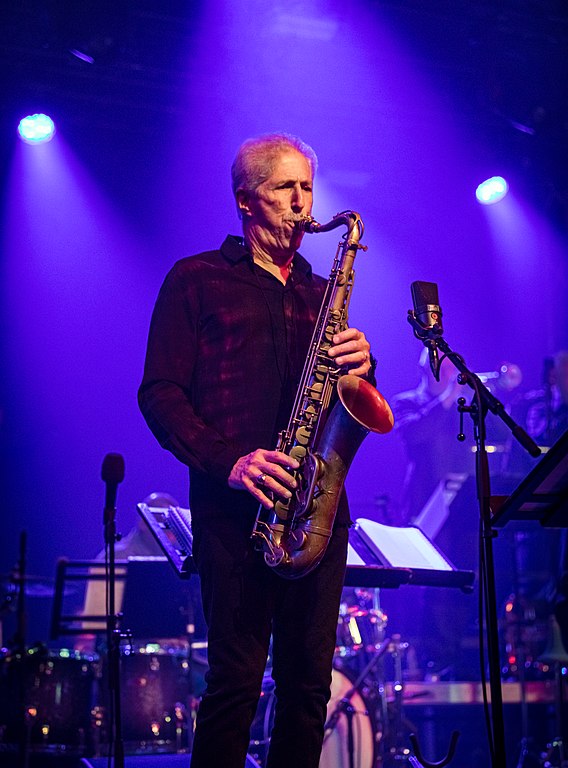Mintzer, New Mambo

I want to start the New Year with something upbeat and optimistic, and few things deliver that better than big band music. New Mambo was composed by Bob Mintzer (b. 1953), a jazz saxophonist, composer, and arranger who directs the Germany-based WDR Big Band. Mintzer has played in some top-notch big bands and served on the faculty at University of Southern California.
We have featured several Performance Picks from the WDR (Westdeutscher Rundfunk Köln, West-German Radio/Television Station of Cologne) in the past and will have another next week. The WDR Big Band is something of a treasure trove of big band swing music. In addition to the resident musicians, it features many guests artists—all highly trained virtuoso performers as you might expect in a genre that demands the highest musicianship.
So what is a Mambo, or for that matter, a new Mambo? A short answer is that it is a relatively new dance form from Cuba with long roots in a variety of older musical styles. We have discussed elsewhere some of the complex history of court dance, particularly in connection with the Baroque suite. The Danzón was a slow, formal dance with syncopated rhythms that was probably taken to Cuba by the Spaniards who ruled there for centuries. In Cuba, African influences gave it some more complex rhythms.
The Danzón-Mambo was popularized by Antonio Arcaño in the 1930s in Cuba and then brought into the big band tradition by Dámaso Pérez Prado. It became one of the most popular dance forms in America during the “Swing” era of the 1930s and 1940s.
The form relies on repeated arpeggio figures with syncopated rhythms called Guajeos. You can hear a rather straight-forward example in a Mambo by Arcaño here (beginning at 0:08).
Contrasting guajeos could be combined to create a far more complex contrapuntal rhythm. You can hear this clearly in a Mambo by Perez Prado here. The saxophones play one pattern (beginning at 0:09) and the trumpets enter (at 0:23) with another (nicely separated in stereo).
New Mambo offers something similar. The main theme (beginning at 0:18) has two competing figurations presented by the woodwind and trumpets. When the theme is repeated (at 0:36) a third line is added by the trombones. The second theme (beginning at 0:53) presents a single line, to which a second is added when it repeats (at 1:10). This kind of writing characterizes the piece throughout, although the genre also features solo improvisations, in this case by Swedish saxophonist Johan Hörlén and American pianist Billy Test.
Despite its often extreme syncopations, dense harmonies, and rhythmic complexity, big band music frequently retains a clarity that comes from each section having very distinct melodic lines. The music is almost always challenging and sophisticated, but rarely obscure or confusing.



